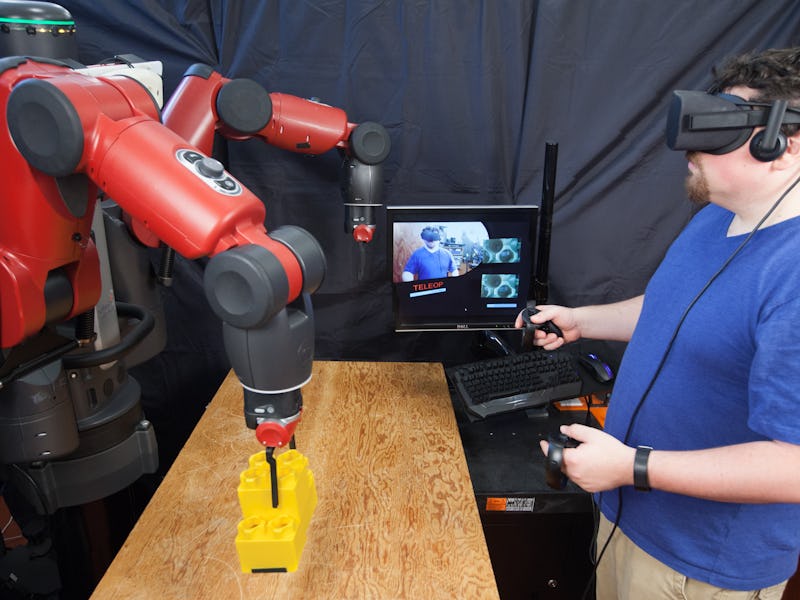Unemployed Gamers Could Use VR Headsets to Work From Home
With this new technology, video gamers could operate robots and make money doing it.

Scientists have found a way for people who love playing video games — and who are increasingly unemployed — to make money doing what they love.
Using a virtual reality headset, gamers could remotely control robots in a factory miles away. Researchers at MIT’s Computer Science and Artificial Intelligence Lab (CSAIL) said Tuesday that they developed the system as way to “game-ify” manufacturing jobs, most of which still require a human to be there in person to supervise the robots.
Users direct the robots with a VR headset and a set of hand sensors to make them feel “like they’re inside the robot’s head.” Various motions allow the user to direct the robot to grip objects and move around to complete factory tasks.
Humans could supervise the robots from a distance and, when necessary, connect seamlessly to the robots task space. A video from MIT shows that the sensors recognizing the user’s movements are precise enough to direct the robot to pick up small screws and use common tools.
While this new technology would allow anyone to work remotely to teleoperate the factory robots, researchers note that “unsurprisingly, users with gaming experience had much more ease with the system.” The system is even designed to work with common gaming VR headsets, like the Oculus Rift and HTC Vive.
So this work from MIT could help get those video gamers back in the earning workforce. The National Bureau of Economic Research published research in June that shows the relationship between the increasing amount of time young men reported playing video games that corresponds with the rising unemployment of men ages 21 to 30 — at a faster rate than any other group of people. Researches concluded that technological improvements, which have brought along more access to computer and video games, are much to blame for young men working less and less.
Besides giving more people the opportunity for employment, the VR system is significantly better than automated factory robots working alone, the CSAIL researchers argue. In a research paper published in March, MIT scientists write that factories would benefit when humans controlling these robots will be able to prevent mistakes and resolve issues.
“Teleoperated robotic systems will allow humans the ability to work at scales and in environments which they cannot accomplish today,” Lipton wrote in a research paper published in March) “Barriers to working such as physical health, location, or security clearance could be reduced by decoupling physicality from manufacturing tasks.”